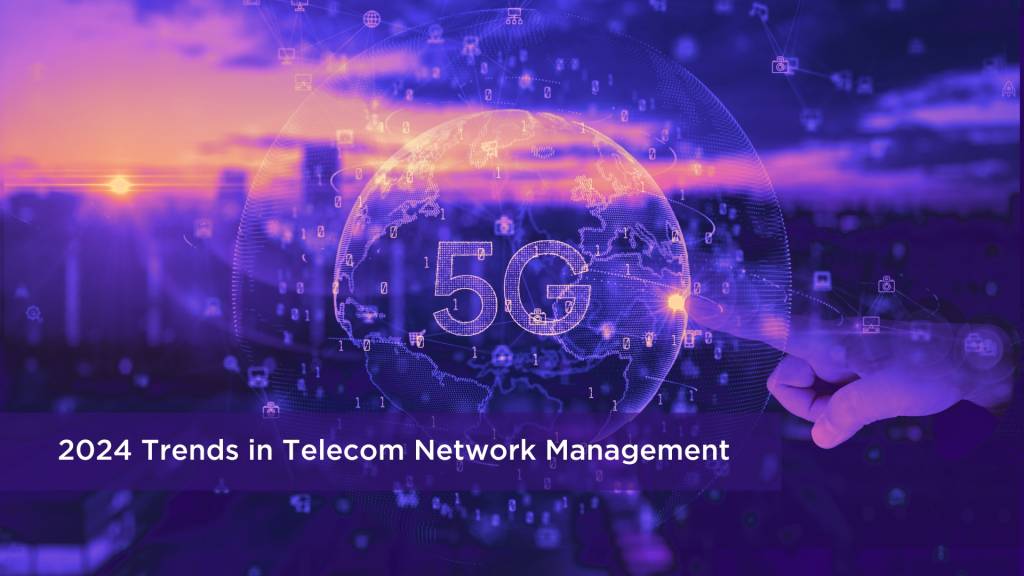Innovative Approach to Forward-Thinking
As we approach 2024, the telecom industry is undergoing transformational change. As a leading provider of telecom network management systems, Innovile is closely monitoring and implementing these trends. Here’s an in-depth look at what 2024 has in store for us and how Innovile is preparing to lead these changes.
AI and Autonomous Networks
The future of telecom network management systems is inextricably linked to AI and autonomous networks. These technologies will be even more important in 2024, providing unparalleled efficiency, network performance, and service quality. Innovile is at the vanguard of this change, using AI to not just automate but also alter mobile network operations.
Our strategy is based on Self-organizing networks (SON), a type of sophisticated automated network management that allows networks to configure, optimize, and heal themselves. By incorporating AI into the SON solution, we are designing networks that can adapt to changing situations in real time, such as fluctuating traffic or network outages. This results in increased network stability and a more consistent user experience.
Furthermore, our telecom network configuration management software has been greatly enhanced with AI integration. This program now goes beyond simple configuration duties, analyzing massive volumes of network data with AI algorithms. This study aids in making predictive network configuration modifications, anticipating future faults, and maintaining optimal performance.
We’re also using AI to improve the user experience. Our systems can now assess user behavior and network needs, proactively changing resources for more tailored service. AI-powered solutions are easing complicated activities for our staff, from network design to maintenance, allowing our team to focus on more strategic projects.
Embracing Open Architectures and APIs
The telecom sector is progressively embracing open designs and API integration, which are renowned for improving network flexibility and cost control. Open architectures are gaining traction, allowing for more flexible network design and simpler integration of multiple components. API integration is becoming increasingly important for network system interoperability, boosting functionality and user experience. This combination promotes more adaptive network topologies and effective cost management, expressing a move toward more modular and economically efficient network management approaches.
RIC’s Increasing Importance
The Radio Intelligent Controller (RIC) is quickly becoming a game changer in Radio Access Network (RAN) operations. It marks a significant shift in network administration toward more programmability and agility. The RIC technology is supposed to bring in a new era of network management that is more flexible and responsive.
The following are key features of RIC’s influence on network management:
Increased Programmability: RIC improves RAN programmability, enabling more complex and adaptive network management tactics.
Increased Network Agility: With the introduction of RIC technology, networks will become more flexible, reacting to fluctuating needs and situations more efficiently.
Network Strategy Transformation Potential: The adoption of RIC is expected to revolutionize existing network strategies, allowing for the development of more dynamic and responsive RAN operations.
The Rebirth of Small Cells
Small cells are becoming increasingly important in improving network coverage, particularly in private networks and in situations where standard network infrastructure is challenged. Several major elements have contributed to their resurgence:
Improved Coverage in Difficult Environments: Small cells are an excellent way to enhance network coverage in regions where typical macro-cell networks may not be practical or cost-effective.
Low Cost and Rapid Deployment: These tiny units are notable for their low cost and simplicity of deployment, which is especially useful in quickly changing network settings or locations requiring rapid network growth.
Contribution to Comprehensive Network Coverage: Small cell deployment is critical for providing comprehensive network coverage, filling service gaps, and increasing overall network capacity.
The Fusion of Cloud and Edge Computing
The convergence of cloud and edge computing is predicted to result in substantial advancements in network technology by 2024. This convergence is positioned to address critical network management challenges:
Reduced Latency: One of the main advantages of merging cloud and edge computing is the significant reduction in latency. This is especially important for real-time applications that demand quick data processing and reaction times.
Real-Time Application Support: The smooth integration of these technologies is critical for the effective operation of real-time applications, which improves their performance and dependability.
Increased Network administration Efficiency: It is expected that the marriage of cloud and edge computing technologies will result in more efficient network administration. Edge computing minimizes the pressure on central cloud systems by processing data closer to the source, resulting in quicker and more responsive mobile network operations.
Optimizing Network Performance for Energy Efficiency
Optimization of network performance with an emphasis on energy efficiency is a significant goal in modern network administration. This entails employing sophisticated technology to improve the sustainability of mobile network operations.
Application of Advanced Algorithms and Artificial Intelligence in Network Management:
Intelligent Resource Management: Network systems may manage resources more effectively by utilizing AI-driven algorithms. These systems dynamically assign resources based on network traffic and consumption patterns, decreasing energy waste due to over-provisioning.
Predictive Maintenance and Optimization: Predictive analytics is used to discover and correct network inefficiencies in advance. This proactive strategy not only ensures consistent service quality but also enhances the network’s overall energy efficiency.
Continuous real-time data analysis for network setup allows for fast alterations in network configuration. This capacity is critical for adjusting to varying network needs while consuming as little energy as possible.
Energy-Efficient Networking Solutions for 5G: Solutions are being developed to efficiently control the energy usage of 5G networks, considering the special requirements of these networks. These technologies are intended to meet the problems of 5G, ensuring that its high-speed and low-latency characteristics are accomplished with a minimal environmental impact.
Emphasis on Total Cost of Ownership (TCO) Efficiency in Network Management
The increased focus on Total Cost of Ownership (TCO) efficiency in network management demonstrates the industry’s rising relevance of cost efficiency. This trend entails lowering total network management costs, implementing cost-effective solutions that preserve performance and quality, using open architectures for flexibility and cost savings, and simplifying operational operations to improve efficiency and profitability. These solutions represent a movement in the industry toward more cost-effective network management approaches.
Conclusion
Emerging developments will generate revolutionary changes in the telecom network management ecosystem in 2024. The combination of AI with autonomous networks, for example, will change network efficiency and self-management. Sustainability will become a key element, with the growing adoption of eco-friendly practices and energy-efficient infrastructure, particularly as 5G networks expand. Improved network efficiency and user experience will be prioritized, with modern management technologies used to improve service quality and save operating costs. In addition, the industry will migrate toward more open and collaborative network ecosystems, embracing open-source components and API connectors for more flexible management solutions. Adapting to 5G’s new needs will be critical in tackling infrastructure and energy management issues.




